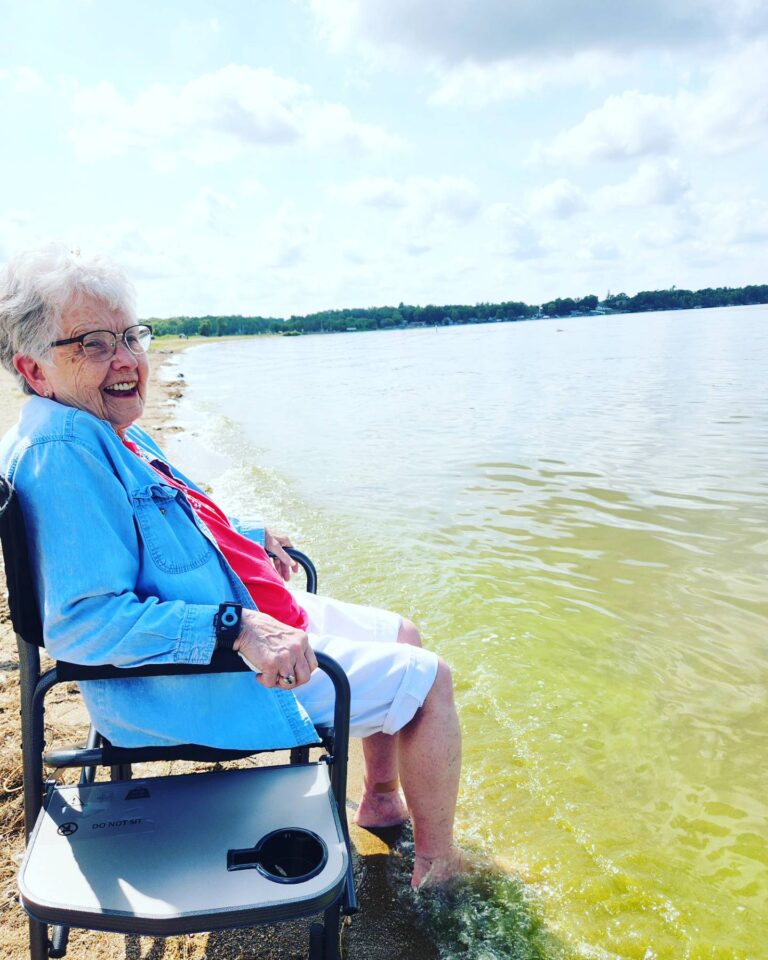
You’re going about your life, everything is working out fine, and ouch! Out of nowhere, you have leg pain. This is different from a Charlie horse and you don’t remember experiencing any injury. You eat a banana hoping it’s a simple cramp that will subside. The banana was nice, but hours later your leg still aches. You begin to notice redness and your leg feels warm.
After searching Dr. Internet, and reading about the risks of deep vein thrombosis, or “DVT” for those 55 and up, you make an appointment with your own doctor. The ultrasound and tests confirm you have a DVT!
Find Senior Living Near Me
Fast forward through a few weeks of taking blood-thinning medications and following careful orders. Your doctor’s follow-up appointment reveals you’re clot free! Your outcome is the best-case scenario. Unfortunately, not everyone who experiences a DVT is as lucky. The CDC reports that on average, a blood clot kills an American every six minutes! March is Deep Vein Thrombosis, “DVT” awareness month, so let’s talk about symptoms, risk factors, and prevention—learning this information could save you or someone you love!
Deep Vein Thrombosis or “DVT”
Mayo Clinic explains that a DVT is a blood clot that forms in the deep veins of the body, typically the leg. When a clot travels into the lungs causing shortness of breath and pain, it’s called a pulmonary embolism. Arterial clots that travel into the brain can cause a stroke. An arterial blood clot that blocks the flow of blood to the heart can result in a heart attack. Blood clots can be very serious and should be diagnosed and treated promptly.
Symptoms:
DVTs can cause pain, swelling of the limb or veins, warmth in the affected leg, and sometimes a red or purple rash. They can also present with no symptoms at all. Complications of a DVT happen when the clot travels to other areas of the body.
*Risk Factors:
- Heart failure
- Being over 55
- Genetics (blood clot history or blood clotting disorders)
- Bone fracture/cast
- Active cancer/chemotherapy
- Recent surgery (pelvic, abdominal, hip, or knee)
- Inactivity/immobility (bed rest of 3+ days, traveling for 4+ hours)
- Obesity
- Major accident/fall
- Pregnancy
- Smoking
- Taking estrogen (birth control pills, patches, rings, or hormone replacement therapy)
*The above list has been provided by www.stoptheclot.org.
You’ve probably heard that when flying on an airplane, it’s important to walk around. Airplane seats are a struggle for most of us. Sitting in one tiny seat ever so carefully and leaving room for your neighbor might result in you sitting folded up like a pretzel for hours. Unfortunately, crossing your legs and sitting crunched up for long periods can be the recipe for a clot.
Overly restrictive clothing like skinny jeans or stockings that are so tight they cut off your circulation can also be a potential cause. While garments like compression stockings prescribed by a doctor could help improve swelling and varicose veins, be mindful if those are causing discomfort and alert your doctor if they do—be sure the cure isn’t part of the problem!
The American Heart Association reported the findings of a study completed in Europe that concluded when someone develops COVID-19, their risk for a blood clot increases for almost a year after infection! The risks were reportedly highest during the time of infection and up to four weeks following. This discovery makes it even more important that you continue to seek regular medical care and report any new health concerns to your doctor promptly.
Preventing DVT:
- Stay active.
- Maintain a healthy weight.
- Don’t smoke.
- Eat a healthy diet.
- Stay hydrated.
- See your doctor regularly.
Regular Medical Care:
As you age, seeing your doctor is very important to maintaining a good quality of life. Conditions that go untreated can compound and turn into serious complications that can impact your health and life satisfaction. As you make retirement arrangements, be sure to include regular medical care in your plans.
If you’re interested in senior living solutions that include healthcare, Edgewood can help! We offer on-site preventative care, outpatient therapies, and home health and hospice all under the same roof where you call home. Questions? Give us a shout at info@edgewoodhealthcare.com.




